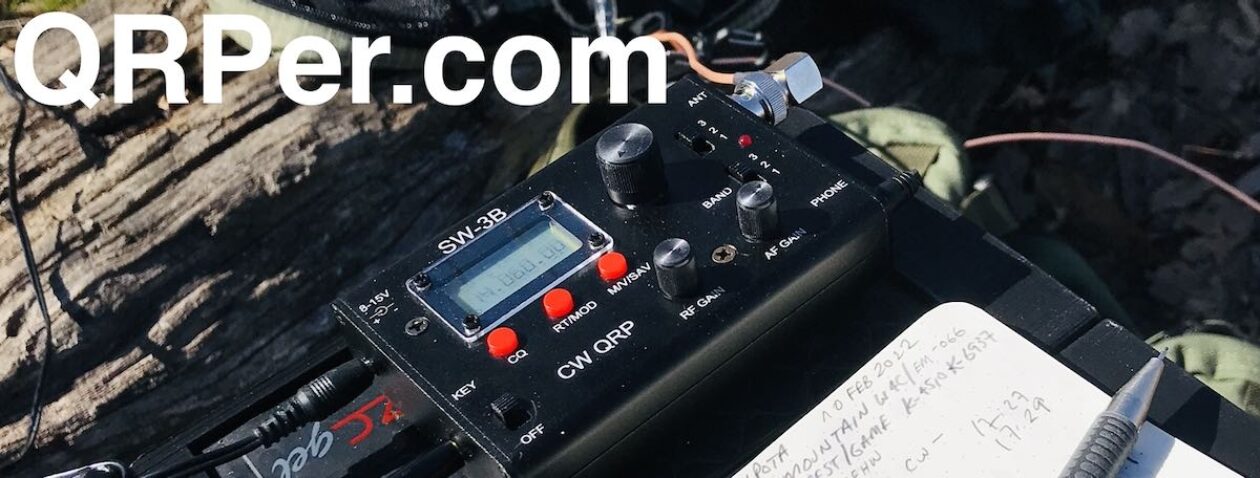On Thursday, December 28, 2023, I had the good fortune of meeting up with Jonathan (KM4CFT) at the Zebulon Vance Historic Birthplace (K-6856) to play a little POTA.
You might recognize Jonathan’s callsign because he has a popular YouTube channel and also produces excellent EFHW antenna kits.
These days, Jonathan lives in Colorado, but he’s originally from western North Carolina. We met once before when he was in town visiting his folks. That previous time was very short, though; this time, we wanted to meetup and fit in a POTA activation together.
We arranged to meet around 2:00 in the afternoon at the Vance Birthplace.
We decided to deploy one of Jonathan’s End-Fed Half-Wave antennas. He cut this particular one for 20 meters.
We set up under the picnic shelter with the antenna essentially in a sloper configuration.
Gear:
Note: All Amazon, CW Morse, ABR, Chelegance, eBay, and Radioddity links are affiliate/partnerhip links that support QRPer.com at no cost to you.
- lab599 Discovery TX-500
- TELESIN Carrying Case (for the TX-500)
- Penntek TR-45L with optional Z-Match tuner and internal battery
- KM4CFT End-Fed Antenna Kit (eBay partner link)
- Key cable: Cable Matters 2-Pack Gold-Plated Retractable Aux Cable – 2.5 Feet
- BaMaKeY TP-III Ultra-Compact Twin Paddle
- Begali Traveler
- GoRuck GR1 USA
- Bioenno 15 Ah LiFePo Battery (Model BLF-1215A)
- Weaver arborist throw line/weight and storage bag
- GraphGear 0.9mm 1000 Automatic Drafting Pencil
- Rite In The Rain Top Spiral Notebook
- Camera: OSMO 4 is the current version) with Sensyne Phone Tripod
I brought along a couple of radios that Jonathan had yet to operate. He chose to use the Penntek TR-45L (great choice!).
One wrinkle: Jonathan operates with his paddle in “reverse” with the left paddle sending dashes and the right sending dits.
Unfortunately, the TR-45L doesn’t have a software function to flip between “normal” and “reverse” settings. No problem, though: Jonathan simply turned his key (a BaMaKey TP-III) upside down! Problem solved!
The only annoying issue was the 45L speaker–something inside the chassis or speaker assembly was rattling/buzzing with louder signals and with the sidetone. After noticing the speaker vibration at an activation in South Carolina a few months ago, I opened up the TR-45L at the QTH and tried to tighten down anything that could resonate inside the chassis. My fix seemed to work until we powered it up for Jonathan to use. I may have to add some padding around the speaker assembly if I can’t locate the culprit inside the radio–it could be pretty much anything.
Jonathan plugged along and paid no attention to the buzz, nor my fiddling with the radio while he operated. (You’re a good sport, OM!).
Here’s Jonathan’s QSO Map:
After he completed his activation, Jonathan handed over the radio to me.
 Since I couldn’t sort out the acoustic buzz/vibration without opening the radio on the picnic table, I opted to swap out the TR-45L with my Discovery TX-500.
Since I couldn’t sort out the acoustic buzz/vibration without opening the radio on the picnic table, I opted to swap out the TR-45L with my Discovery TX-500.
 I hopped on the air and logged quite a few stations on 20 meters. It was serious fun!
I hopped on the air and logged quite a few stations on 20 meters. It was serious fun!
Here’s my QSO Map:
Activation Video
Here’s our real-time, real-life video of the entire activation. As with all of my videos, I don’t edit out any parts of the on-air activation time. In addition, I have monetization turned off on YouTube, although that doesn’t stop them from inserting ads before and after my videos.
Note that Patreon supporters can watch and even download this video 100% ad-free through Vimeo on my Patreon page:
Click here to view on YouTube.
POTA Meetups
 Jonathan, it was great hanging with you and, again, I’m so impressed with your CW progress. It seems like only yesterday when you started your CW journey!
Jonathan, it was great hanging with you and, again, I’m so impressed with your CW progress. It seems like only yesterday when you started your CW journey!
When folks are passing through western NC it can be difficult for our schedules to align for a POTA meetup, but I’m so happy when they do.
Thank you!
 Thank you for joining us on this joint activation!
Thank you for joining us on this joint activation!
I hope you enjoyed the field report and ctivation video as much as I enjoyed creating them.
 Of course, I’d also like to send a special thanks to those of you who have been supporting the site and channel through Patreon and the Coffee Fund. While certainly not a requirement as my content will always be free, I really appreciate the support.
Of course, I’d also like to send a special thanks to those of you who have been supporting the site and channel through Patreon and the Coffee Fund. While certainly not a requirement as my content will always be free, I really appreciate the support.
As I mentioned before, the Patreon platform connected to Vimeo make it possible for me to share videos that are not only 100% ad-free, but also downloadable for offline viewing. The Vimeo account also serves as a third backup for my video files.
Thanks for spending part of your day with me! Have an amazing weekend!
Cheers & 72,
Thomas (K4SWL)





















































































